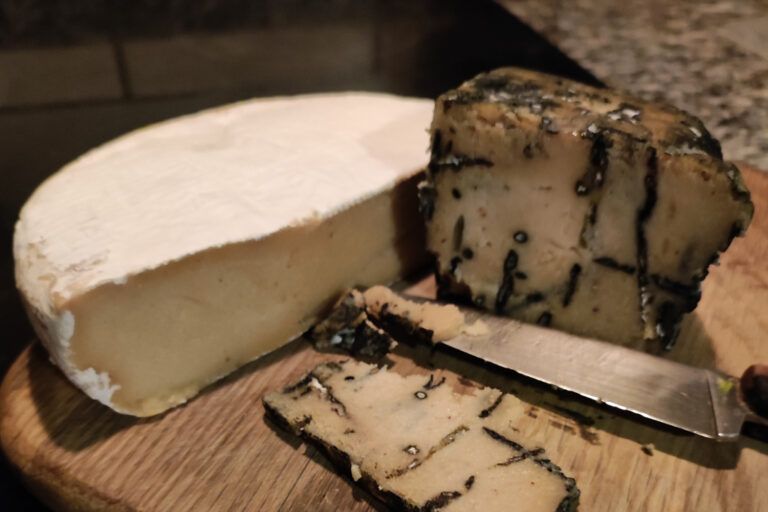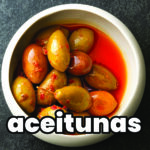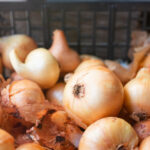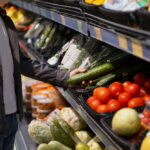The Best Fluffy Pancakes recipe you will fall in love with. Full of tips and tricks to help you make the best pancakes.
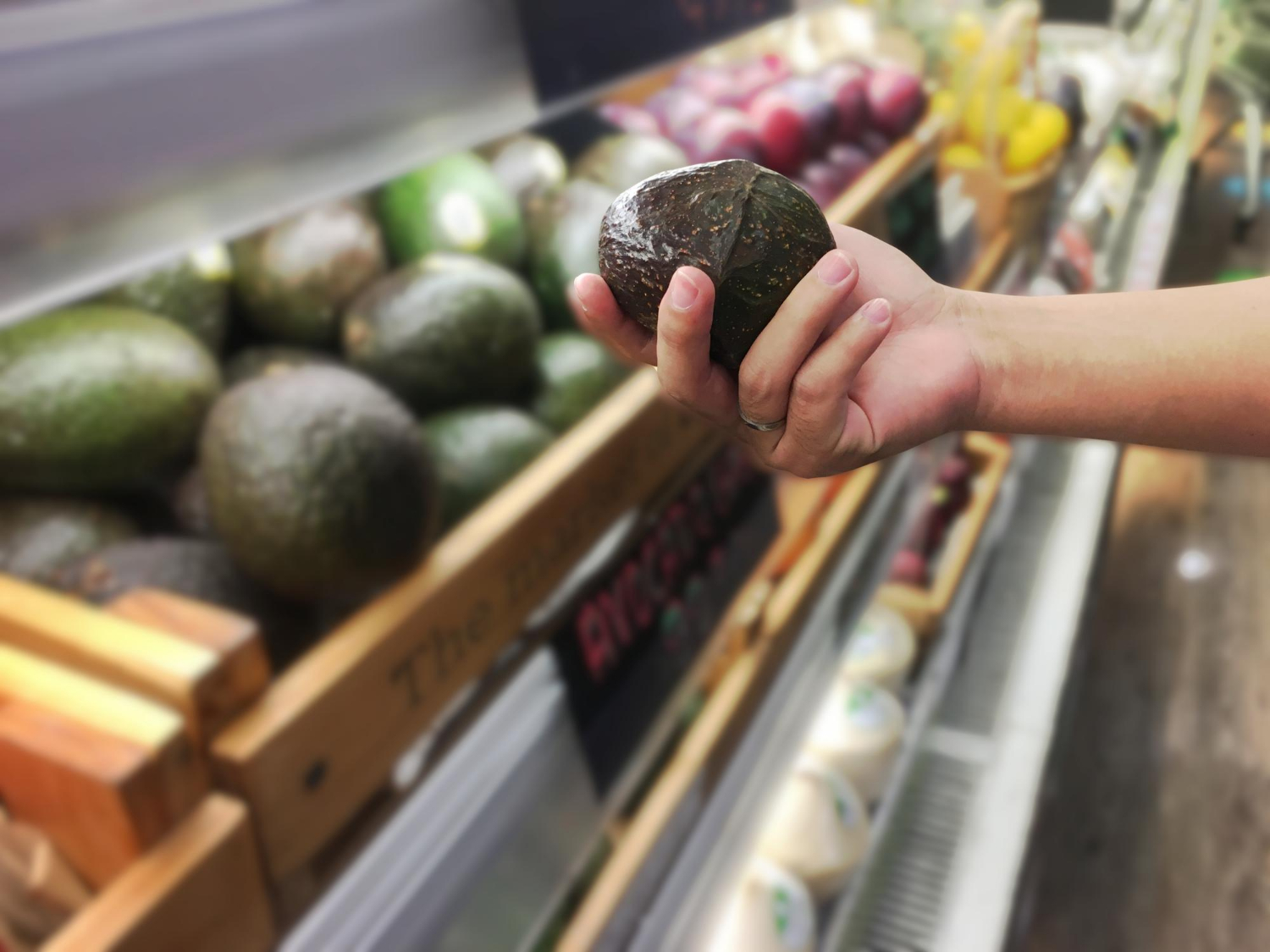
Happy dance – you’re planning your next trip to Spain and going to be staying in self catering accommodation. As a vegetarian or vegan, this will mean shopping for suitable food and ingredients during your visit which are also going to be super-convenient to prepare, even in the smallest of holiday apartment kitchens!
Supermarkets are a great way to explore a different side of Spain. It’s an opportunity to discover new ingredients, different types of food, enjoy a different way of life and get a glimpse into the rich culture of ‘real’ Spain during your visit 🙂
While much about shopping in Spanish supermarkets will be familiar to you – there maybe things that are a bit different, particularly for the vegetarian and vegan visitor and I’ve tried to highlight these below-
I’ve gathered together some of the best tips to ensure you shop with confidence for vegetarian and vegan food and ingredients during your next visit!
Big Cities Vs Rural Areas / Off The Beaten Track
Spain is no different to anywhere else when it comes to big cities vs smaller towns and villages. It’s easy to visit a cosmopolitan city like Barcelona or Madrid and assume, because you have found some great vegan food, that it will be the same in the whole of Spain!
Add to this the fact that, although the availability of vegan and vegetarian food is growing fast, Spain is very much coming from behind here and is still far behind the UK when it comes to the % of vegetarians and vegans. According to Wikipedia, 8% of the UK is vegetarian compared to 1.4% of Spain – this is reflected in what we see in supermarkets, so don’t be surprised if you don’t see the range of vegetarian food you see at home!
Therefore when travelling off the beaten track and outside of the big cities / tourist areas, arm yourself with a little knowledge about food suitable for vegetarians and vegans so you know what to look for to buy some wonderful fresh ingredients to use to create simple yet tasty meals in your holiday accommodation.
The same goes with types of supermarkets. In the large cities you will find a plethora of different supermarket types including ‘out of town’ malls to busy city centre small supermarkets geared to busy workers. Plus in tourist hot-spots you will find supermarkets which cater specifically for international tourists. In smaller towns and villages, you will probably find a family owned supermarket or a mini-version of a large supermarket chain which stocks the basics. These stores can be a treasure trove when it comes to food shopping, often stocking local ingredients.
Be Prepared to Read Labels
This is a super-important tip! Use an app to translate if you are not confident to translate labels into English (see how to use an app to translate labels if you are not familiar with this HERE) as not all products in supermarkets are labelled as vegetarian or vegan by any means. Likewise not all products that appear that they should be vegetarian or vegan are so.
For example, Pisto, a Spanish vegetable dish similar to ratatouille is suitable for vegans and vegetarians, however it is not always labelled as such. Unless it’s something you are familiar with, it’s only by reading the labels you would know.
Likewise polvorones, a traditional Christmas sweet biscuit is often made with pig fat. You will find some made with vegetable oil – but again, it’s down to reading the label!
If you are a vegetarian who avoids cheese with animal rennet you will definately need to check labels carefully, I explain more about animal rennet in Spanish cheese HERE.
Watch Out For False Friends!
We use this term when learning languages to describe words that look like they mean something we are familiar with – but mean something completely different! And that’s what I mean here.
There are some products that surely must always be vegetarian or vegan – olives for example. But no! Some olives are stuffed with anchovy and some pickled items like pickled gherkins have anchovy flavouring (watch out for Anchoa).
And don’t assume that products that look familiar will be the same as you are used to at home. A tin of cooked beans in sauce, for example, may look like baked beans, however some may contain animal fat or meat. But don’t worry if you can’t find ‘real’ baked beans, we have a two ingredient version you can whip up in no time here – Faux Baked Bean Recipe!
Be Aware of Opening Hours
This isn’t vegan/vegetarian specific, however be aware of opening hours of Spanish supermarkets. This is another thing that will change in big cities to smaller towns – and depend on the time of year. However it is not unusual for village supermarkets and independently run shops to shut for siesta, which is around 2 – 5 in the afternoon, but depends on where you are in Spain and the time of year.
Most supermarkets open around 9 – 10 in the morning, shutting 9 – 10 in the evening.
Most supermarkets will shut on Sunday (however you will find fresh bread in some bakeries that open on Sunday, this isn’t unusual).
Some supermarkets will open for limited hours on a national holiday – however this depends on the holiday and supermarket. The supermarket will probably have a sign up saying what their opening hours are during a holiday. If in doubt, assume they will be closed.
Look For Easy Cook Alternatives
Unless you love cooking and want to make cooking part of your visit activities or are staying in holiday accommodation which has lots of cooking equipment, look for easy cook options. For example, while gazpacho is really quick and easy to prepare from scratch, but it does require a blender to get smooth results- so look for ready made gazpacho for a easy-prepare alternative. You can always dress this up back in your accommodation to create an authentic meal.
Likewise ready prepared tortilla de patata (potato omelette) is widely available in supermarkets (in the chilled section, you’ll typically find versions with and without onion) and will save you cooking this at home. You can serve it heated or eat cold with salad – or Spanish style, in a sandwich or roll!
You will find tins of Pisto and Sofrito, which are vegetable based and in the frozen section you will find packs of mixed vegetables (but read the labels as some will contain meat) which make a quick base for a meal.
Also, chilled or canned pasta sauce is a great base for a easy-to-prepare meal as is chilled or cartons of soup (although check the ingredients on prepared soup for meat stock).
Don’t Over Buy!
While there are some foods you may want to stock up on when you visit a large supermarket (for example a vegetarian ready-meal or a less common type of vegan cheese. there are some ingredients you will find everywhere. Staples such as tinned tomatoes. tomate frito (which is one must have to put on your shopping list), jars of cooked beans, packets or rice and pasta etc are available even in the smallest of supermarkets.
If your holiday accommodation is short on food storage space, the staples above are certainly something you an buy as you need them wherever you are.
Supermarket Etiquette
If you visit a supermarket in a small community, don’t be surprised to be greeted by staff and shoppers alike! Also don’t be surprised if there’s a sort of self prioritizing queue system. You may find someone with a single item ‘pushes in’ in front of you – likewise if you have a single product to buy and there’s a queue with lots of people in front with trolleys laden with items, don’t be surprised if you get invited to the front. This is part of the joy of exploring off the beaten track Spain!
Self Serve Fresh Produce
You may find there are plastic gloves positioned by the plastic bags in the fresh produce section. Many if not all supermarkets expect you to wear gloves when selecting produce. There will be a bin in this section too for disposing of your used glove.
Super Market Ticket Systems
Some supermarkets still operate ticket systems where service is required, for example at the cheese counter where cheese is cut and weighed. There will be a ticket machine near this counter and you are expected to take a ticket which marks your turn. The assistants will either shout the next number or there will be a display which shows the next number.
If you are not familiar with the numbers in Spanish, keep an eye on the person in front of you and this will give you a clue as to when it is your turn.
Single Checkout Queue
Some larger supermarkets operate with a single queue at checkout and shoppers are channelled to the next available cashier. This is a really easy system to navigate as typically there will be a flashing light on the checkout of the cashier waiting.
Paying in Supermarkets
This is likely to be the same as what you are used to. Payment can be made by cash or card. Smaller supermarkets may have a minimum spend in order to use a card.




